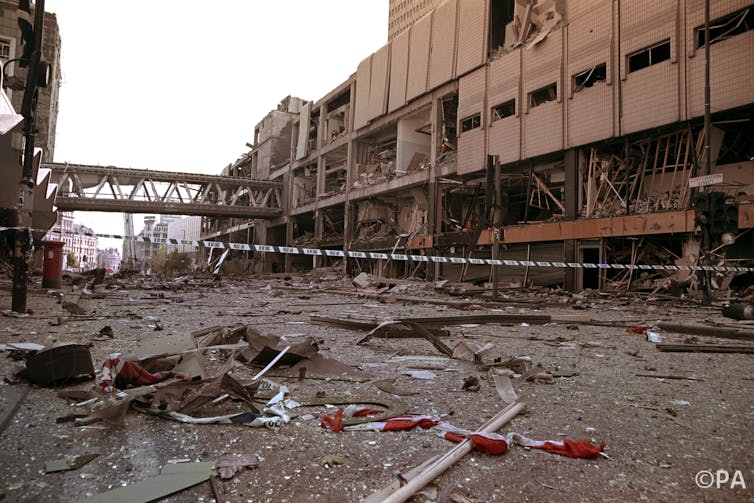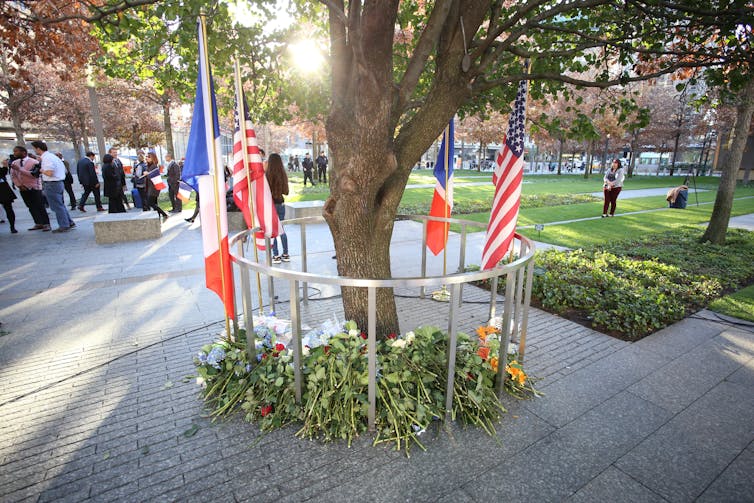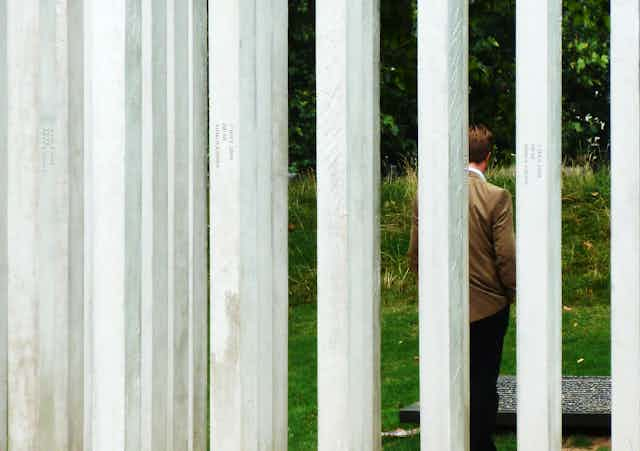It has been 11 years since four bombs detonated in locations around London, killing 52 people and injuring hundreds more. Every year, the anniversary of the the 7/7 bombings is commemorated with lectures, ceremonies and services for the victims. In 2009, a memorial featuring 52 stainless steel pillars – one for each life lost in the bombings – was unveiled in Hyde Park.
Even now, Tavistock Square Memorial Trust is in the process of raising funds for a second 7/7 memorial, to be located near the site of the bus which exploded. In last year’s spending review, George Osborne allocated £50,000 worth of Libor banking fines to the cause, moving the charity substantially closer to its funding target.
But why does London need a second memorial? On one level, it seems natural and proper to mark such occasions. The exalted scholar of memory, Pierre Nora, once stated that “we speak so much of memory because there is so little of it left”. He meant that, unlike older generations, the rhythms of our lives have been sped up by neoliberal capitalism and are no longer structured around religious services, cultural traditions and the seasons.
Without these traditional rhythms, we sometimes struggle to transform our memories into a compelling story about who we are and what we stand for. So, in the place of these traditional rhythms, different types of remembrance have been invented. Commemorations of various wars, anniversaries and celebrated people are organised by local and national governments, as a way of reminding us about our history.
Memorial overload
There has been such a rush to memorialise the past that the streets and parks of London are now overflowing with plaques and statues – so much so that local councils have brought in regulations, which dictate that 20 years must pass before campaigners can apply to build a historical marker (though this has been waived for the Tavistock Square memorial, given the significance of the bombing).
In particular, the memorialisation of terrorist attacks has become far more prominent in recent years, in response to the so-called “war on terror”. Increasingly, Western society thinks of itself as part of a struggle between civilisation and barbarism, hope and fear. Memorials are built for the victims of terrorism, to help us feel more connected to these stories and values.
This makes it all the more surprising that some cities decide against commemorating attacks at all. For instance, in May 2016, Manchester City Council expressly refused to commemorate the 20th anniversary of the enormous IRA bomb, which destroyed the city centre. Their statement read:
We do not forget the events of that day nor seek to downplay them. We recognise and respect the courage shown by the emergency services and Mancunians and the resilient spirit shown by the city. But nor do we choose to dwell on the events of June 15, 1996, every five years … Rather than harking back to one moment in the city’s eventful history, we prefer as a council to look forward. Northern Ireland, in whose politics the bombing had its roots, has thankfully moved on. The world has moved on. Manchester has moved on.
This raises the question: why is there an overload of memorials in some places, and none in others?

The first explanation may simply be practical: no one was killed in the Manchester bombing, whereas 52 people lost their lives on 7/7. The survival of everyone caught in the Manchester blast zone has led to a different dynamic: there are no grieving families, and emergency responders were not traumatised by seeing bodies with injuries rarely sustained outside of war zones.
But this suggests that the impact of the bombing was less significant in Manchester: it ignores the injuries suffered by 212 people, and the £700m worth of damage to the city itself. To attribute Manchester’s decision to the lack of fatalities would be to misjudge the severity of the event.
Silver linings?
The second explanation for Manchester’s refusal to commemorate is more political. Disasters such as terrorist attacks are often described as “turning points”, and held up as symbols of social resilience. In an attempt to mitigate the horror and suffering, and restore people’s confidence, political leaders and journalists often assert that disasters had positive consequences, such as exposing the “inner resilience” of communities, and their innate ability to work together.
This “silver linings” interpretation is also reflected in our laws: policies for emergency response and counter-extremism are often organised around the metaphor of “resilience” – the supposedly “innate qualities which help communities and structures bounce-back from shocks”. And memorials reinforce this notion: while acknowledging the lives lost in a disaster, they also evoke the heroic acts of first responders and community resilience in the aftermath.
For example, after terrorist attacks in Oklahoma, Manhattan and Paris, the authorities have planted memorial trees (“survivor trees”, in American parlance) to symbolise the regrowth of communities affected by these e vents. Commemoration, then, is not simply a reflection on the past. It actually ties past disasters to what happens after, with an emphasis on regrowth, progress and renewal.

This connection is clearly identified, and rejected, in the statement of Manchester City Council. They forcefully assert that the bombing had little to do with the dramatic regeneration of the city centre, as is so often claimed.
They refuse to commemorate the event, not because it wasn’t devastating, but because Manchester’s regeneration and resilience should not be attributed to the IRA bomb. Rather, it was the result of decades of work, starting in the early 1990s with the transformation of the industrial district of Hulme and the regeneration of the city centre.
The anniversary of 7/7, alongside the strange non-anniversary of the 1996 IRA bomb gives us a chance to reflect on memorialisation from a fresh perspective, and question what it means to build a memorial – or even two – to a terrorist event. It turns out, memorialisation is political: it reasserts political identity and social resilience after trauma.
But the refusal to commemorate is bold. It stands apart from the norm. It refuses to absorb the horror of a disaster within the comfortable rhetoric of resilience and recovery. Rather, it communicates that terrible events happen, and there’s no meaning that we can or should draw from them. It says that civic identity should not be defined by a simplistic story about tragedy revealing inner strength – life is far more complicated than that.

